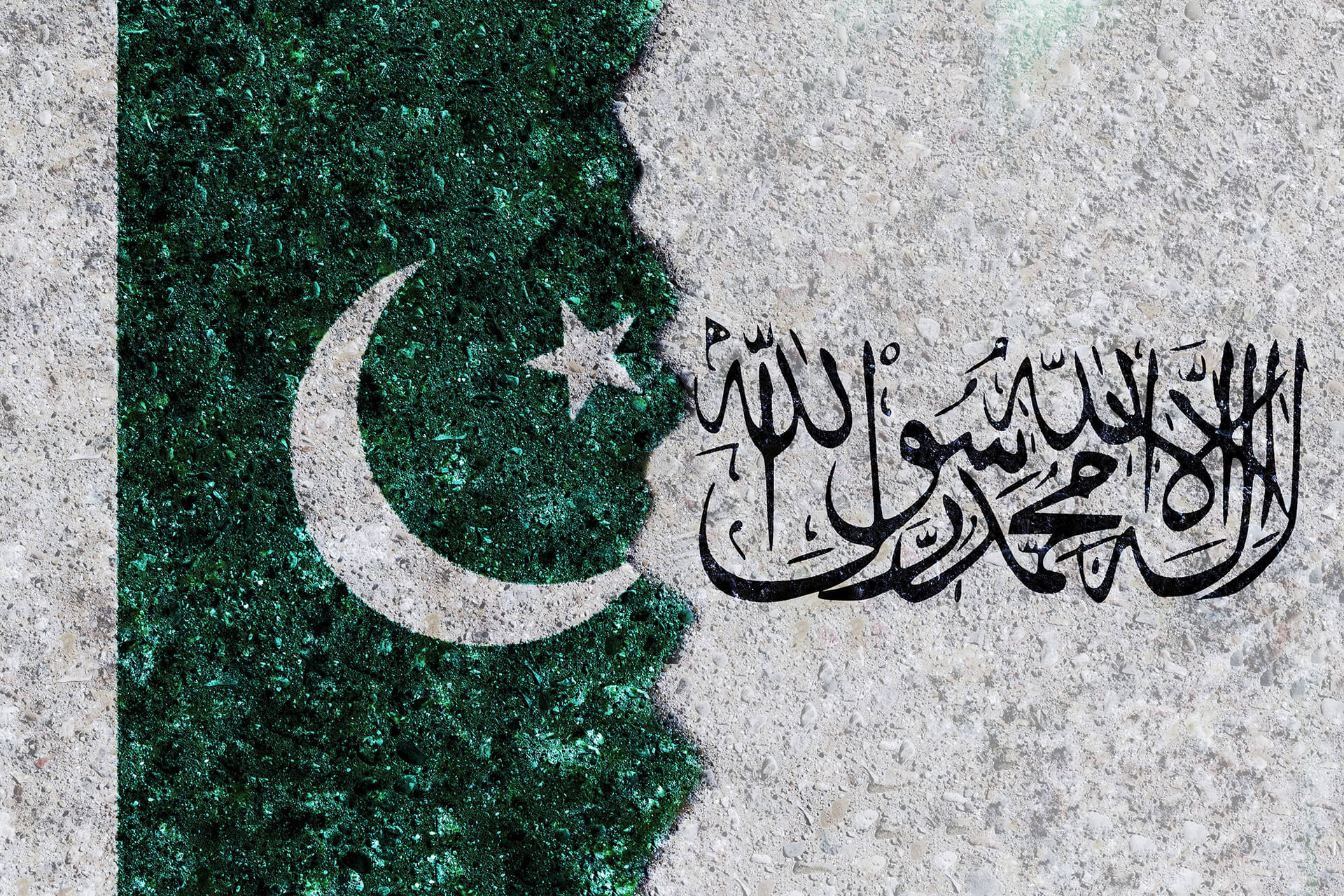On September 4, 2021, the director general of Pakistan’s Inter-Service Intelligence (ISI), Lieutenant General Faiz Hameed, landed in newly Taliban-occupied Kabul. With a beaming smile, he faced the camera of a weary journalist who had asked what was next and stated, “Don’t worry, everything will be okay.” Hameed’s jubilance and optimism were understandable; the group the ISI had fostered, trained, funded and stood behind through two decades of insurmountable odds had just achieved the inconceivable feat of an almost completely bloodless takeover of Afghanistan.
The grand dream of General Zia-ul-Haq, architect of Pakistan’s insurgent strategy, that Pakistan achieve geopolitical dominance in South Asia by facilitating domestic and international jihadist groups never seemed more in focus.
Now using its newfound ally’s resources, Pakistan could set its security problems to rest. The Taliban had adept combat capabilities and resilient pipeline of fighters from madrasas. They also carried the credibility based on their status as a Pashtun and Islamic group.
Pakistan placed its hopes in the ability of the Afghan Taliban to broker peace between Pakistan and the Tehreek-e-Taliban-e-Pakistan (TTP), or Pakistani Taliban. The Taliban could further assist in fighting Islamic State — Khorasan Province and militant groups in Balochistan and, ultimately, continue its “Global Jihad” in Jammu and Kashmir.
Yet, the dream has been cut short by a rude awakening. The ISI has instead seen its assets tied up in a revitalized TTP insurgency, major expansion in ISIS-K operations, continued Baloch militancy and new border clashes with Afghanistan.
The Taliban haven’t been Pakistan’s geopolitical silver bullet; they may become one of its greatest existential challenges. Not only does Taliban-controlled Afghanistan pose new challenges to Pakistan’s security establishment, but it directly challenges Pakistan’s territorial integrity by igniting clashes at its border, inspiring insurgency in border provinces and sheltering new security vacuums Pakistan must fill or combat.
The Taliban had already planned their next steps for Global Jihad: pressure the Durand Line border from within Pakistan and from Afghanistan, establish shadow control over border areas and ultimately erase the Durand Line. Through this long-war strategy, the Taliban could expand Afghanistan and finally heal the scars of its colonial wars with the British Empire by regaining lands taken from the nation during the Anglo–Afghan Wars, taking on the mantle of the heroes of the Pashtun people and the saviors of South Asia.
The saviors of South Asia?
In the midst of the Afghan Civil War, Mullah Mohammed Omar founded the Taliban to address issues in their immediate surroundings in Kandahar. It is unknown if Omar and his group of extremist Deobandi Islamic militant scholars saw the future of the Taliban’s exploits then, but their early success certainly prepared the way for a truly meteoric rise. From the Taliban’s very first successful operation against two pedophilic warlords in Kandahar, they won the hearts and minds of locals for their ability to bring stability and maintain credibility.
It was at this early stage in the group’s operations that a sort of “Taliban Promise” was formed. The group could take control of territory with use of insurgent and guerilla ground tactics in storm-type attacks and defend the territory through its ability to rapidly recruit new units. Then once in control, the Taliban would govern through a mix of Deobandi Islamic principles — adherence to extreme literalist fundamental Islam with specific belief in declaring apostasy — and Pashtun ethnic principles — honor, reciprocity and tribal courts.
Both aspects of the Taliban’s initial Afghan campaign fed into one another, and their identification as Muslim and Pashtun gave them legitimacy and access to fighters while continued territorial control and battlefield success gave their rule legitimacy. This Taliban Promise wasn’t glamorous, but it was something Afghans could predict, expect, understand to some extent and accept as the alternative was being at the whims of a vagrant warlord.
Thus, the Taliban set out from Kandahar, reversing the impending balkanization of Afghanistan, destroying fiefdoms and maintaining a common link to most Afghans through religious and ethnic values. The Taliban’s movement likewise stood in stark contrast to Pakistan’s then main ally, Gulbuddin Hekmatyar (not a difficult feat, as he was best known for shelling residential neighborhoods in Kabul, earning him the title “Gulbuddin Rocket-yar”). With no real competitors and an incredibly successful domestic campaign, the group became the de facto future rulers of Afghanistan, gaining Pakistan’s full support by 1994 and even earning financial assistance from the US in early 2001.
It was only when the Taliban was implicated in the events of 9/11 that the international community’s hope for its success faded. With the façade revealed and the Taliban’s links to international terror organizations like al-Qaeda plain to see, almost all of the group’s bridges with the international community were burned. Then, with the US invasion of Afghanistan and the end of the Taliban government, it seemed the Taliban’s fate was sealed. With no ability to fight against the US military in a head-to-head conflict, Taliban leadership quickly withdrew across the Durand Line to Pakistan’s Pashtun tribal lands.
Pakistan could never let the Taliban fail. The nation had abandoned its previous allies for the Taliban and, therefore, this was Pakistan’s last real chance at creating an insurgent movement to dominate South Asia. Too much had been invested in the Taliban to let them be destroyed by the US military. So, while the US was establishing supply lines through Pakistan for its invasion of Afghanistan, the ISI began providing the Taliban arms, logistics, intelligence and shelter to ensure their survival.
Double games, double problems
The Pakistani intelligence and security community would not abandon its master plan to fulfill General Zia’s goal of creating and controlling the world’s preeminent insurgent paramilitary group for the domination of South Asia. These were the cards Pakistan had played for over 20 years to this point, and changing strategies was not under discussion. The foundational moves for Pakistan were too consequential to even consider looking back.
General Zia’s 1979 decision to combat the Soviet invasion of Afghanistan by funneling international funds specifically into extremist Islam had opened Pandora’s box. Partnering with extremist Abdullah Azzam, the architect of the Global Jihad, created the current pipeline of militants, and dismantling it would be immensely difficult. This was the original “double game” Pakistan had created during the Soviet–Afghan War, supporting US interests by supporting counter-Soviet religious militants in Afghanistan but ultimately damaging US interests by instrumentalizing those militants.
Pakistan’s plan, however, does not seem to have been specifically directed at damaging US national security. The intention was, and always has been, to open the door to extremist militant Islam while directing its violence against Pakistan’s immediate national security concerns. Pakistan would become the champion of Islam in South Asia and lead the Global Jihad against the region’s greatest threat: rival India — Hindustan.
Islamabad’s double game therefore could not end with the US invasion of Afghanistan; it just became more dangerous. The ISI had to directly oppose the US by aiding the Taliban while also maintaining outward support for the US and facilitating its military operations. The stakes were never higher, but in 2021, with the Taliban yet again in control of Kabul and the US still not explicitly pursuing action against Pakistan for its role, it looked as if the double game had been won.
Pakistan’s double game, however, has only created double the problems. Today, the nation remains ensnared by daily insurgent violence and political turmoil, all under the dark cloud of devastating natural disasters. The Taliban have not proven to be the magnanimous allies Pakistan had hoped for, and Pakistan’s problems have only grown as a result of its costly partnership with them.
A stark reminder of the enmity now between the two allies is the Torkham Border Crossing clash seen in February. Pakistani Frontier Corps and Afghan Taliban troops opened fire, wounding one member of the corps and prompting a swift Pakistani diplomatic response to ease tensions.
The documented gunfights between the two militaries in broad daylight at their busiest crossing, however, do not encompass the entirety of their negative interactions. Clashes have died down since February, but smaller interactions like explosions at border points, explosives and drug seizures and illegal crossings still show the Taliban’s continued destabilizing effect on Pakistan.
The Taliban’s active clashes with Pakistan are not even the largest destabilizing factor. The group’s takeover of Afghanistan has proven far more problematic to security because it has given modern insurgency a proof of concept. Insurgents in South Asia and beyond may feel they don’t have to settle for a seat at the table, because if they wait long enough they may own the whole restaurant just as the Taliban seized Afghanistan.
The TTP is the greatest example of this new insurgent impetus. Emboldened by the Afghan Taliban’s victories, it has taken to a new campaign of violence against Pakistani forces and civilians. With no war in Afghanistan, Taliban fighters likewise gain a new purpose and can easily move through Pashtun tribal networks to join a new battlefield.
Pakistan attempted to execute its strategy of controlling the Taliban when it entered into Afghan Taliban-negotiated talks with the TTP, but this quickly failed. Negotiations between the two sides broke down after only a few rounds of talks; Pakistan assassinated TTP core leadership, decisively ending the rapproachment, and violence has trended upward since. Now, one need look no further than the front page of Pakistan’s Inter-Services Public Relations or the TTP’s propaganda websites to see that clashes between Pakistan and the TTP have become a daily occurrence.
Likewise, the drumbeat of attacks by Baloch militant groups like the Baloch Liberation Army, the Balochistan Liberation Front and the Baloch Nationalist Army has only increased. These groups have also become emboldened by the Taliban’s advances and now conduct gruesome attacks specifically targeting Chinese nationals, like in the Karachi University bombing, and broader regional critical infrastructure.
This turn of events has proven that although the Taliban are a byproduct of long-term Pakistani national security and intelligence decision-making, the Taliban do not feel they are beholden to Pakistan. Although the ISI sheltered the Taliban from the US, the Taliban are still a grassroots ethno-religious militant movement with its own goals that now challenge Pakistan’s territorial integrity.
With Afghanistan firmly in the Taliban’s grasp, a new double game is beginning in South Asia: a double game that seeks to rewrite the history of British colonial rule.
The New Fight for the Durand Line
Pakistan’s strategy to gain a stronger position in South Asia by supporting militant extremism has turned out to be quite flawed. While it was possible to steer the Mujahideen’s Global Jihad during the Soviet–Afghan War, it does not seem equally possible to direct the Taliban. The success of Pakistan’s strategy of directing militancy during the Soviet–Afghan War was largely due to the Mujahideen being a specifically Islamist militant movement; the interests of both Pakistan and the militants were mostly aligned. However, the Taliban is a hybrid organization that represents both extremist Islam and Pashtun nationalism; as a result, many of the Taliban’s interests run entirely contrary to Pakistan’s. Erasing the Durand Line and retaking the Pashtun land taken from Afghanistan by the British is the largest of these differing interests.
The Durand Line was drawn in 1893 by the British Empire to better administer Afghanistan after its Pyrrhic conquest during the Second Anglo–Afghan War (1878–1880). Learning from the British army’s absolute decimation at the hands of Pashtun tribal alliances during the First Anglo–Afghan War (1838–1842), colonial Britain was unwilling to invest too heavily in Afghanistan and sought a strategy that would instead defang the nation.
Abdur Rahman Khan was installed as shah by the British in 1880, allowing him to lead a violent domestic campaign to gain undisputed control of Afghanistan from the powerful Pashtun tribal networks. Then, once the Pashtun tribes had been cowed, it was necessary to permanently debilitate them so their tribal alliances could never rise again to challenge Afghanistan or British India.
Pashtunistan was cut in two by the Durand Line, dividing the lands governed by the Pashtun tribes between Afghanistan and British India. Then, with tribal networks separated by administrative and political borders, there was no way for them to form a cohesive military organization to threaten British control of South Asia again as they once did in the First Anglo–Afghan War. Furthermore, subjugating and ruling over fractured tribal networks allowed both Abdur Rahman Khan and the British to maintain a high degree of regional autonomy without consulting domestic power brokers.
The British Empire’s scar on Afghanistan was challenged during the Third Anglo–Afghan War (1919), but ultimately maintained when Afghanistan gained independence. When Pakistan was created in 1947, the border was retained and it has lasted ever since.
The Durand Line served a significant strategic purpose during the Soviet–Afghan War, the Afghan Civil War and US–Afghan War which followed. The political boundary allowed combatants in Afghanistan to easily retreat and regroup into Pakistan when in danger and launch sorties from a safer position than from within Afghanistan. Yet, with no current foreign invading force in Afghanistan, Afghan militants no longer have a need for the border.
Militant Deobandi Islam has proven to be the potion Pashtun nationalism needed to revive itself, and now the Taliban are emerging as the champions of Pashtunistan as an entity. Likewise, the Taliban have good reason to reunite Pashtunistan and erase the Durand Line, as doing so would provide them immense domestic and regional legitimacy, potentially cementing their rule.
Gheyrat and izat, the Afghan concept of honor, run deep through the nation’s history and future. Invasion after invasion has instilled within our storied nation a ceaseless, brave resilience to cruelty in the face of insurmountable odds.
Just as all nations who foray into the Graveyard of Empires do, Pakistan is learning this lesson from the inside out. This all converges on the faultline of their shared scar of British colonial rule — the Durand Line — with a promise to restore Afghanistan’s honor at the price of accepting an extreme Deobandi, kleptocratic military state.
Pakistan’s territorial integrity is facing its first true challenge: The Taliban are increasing their influence and violence at an alarming rate, and insurgents are inching ever closer to nuclear capabilities, all as we peer from over the horizon.
[Anton Schauble edited this piece.]
The views expressed in this article are the author’s own and do not necessarily reflect Fair Observer’s editorial policy.
Support Fair Observer
We rely on your support for our independence, diversity and quality.
For more than 10 years, Fair Observer has been free, fair and independent. No billionaire owns us, no advertisers control us. We are a reader-supported nonprofit. Unlike many other publications, we keep our content free for readers regardless of where they live or whether they can afford to pay. We have no paywalls and no ads.
In the post-truth era of fake news, echo chambers and filter bubbles, we publish a plurality of perspectives from around the world. Anyone can publish with us, but everyone goes through a rigorous editorial process. So, you get fact-checked, well-reasoned content instead of noise.
We publish 2,500+ voices from 90+ countries. We also conduct education and training programs
on subjects ranging from digital media and journalism to writing and critical thinking. This
doesn’t come cheap. Servers, editors, trainers and web developers cost
money.
Please consider supporting us on a regular basis as a recurring donor or a
sustaining member.
Will you support FO’s journalism?
We rely on your support for our independence, diversity and quality.







Comment